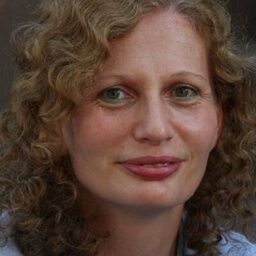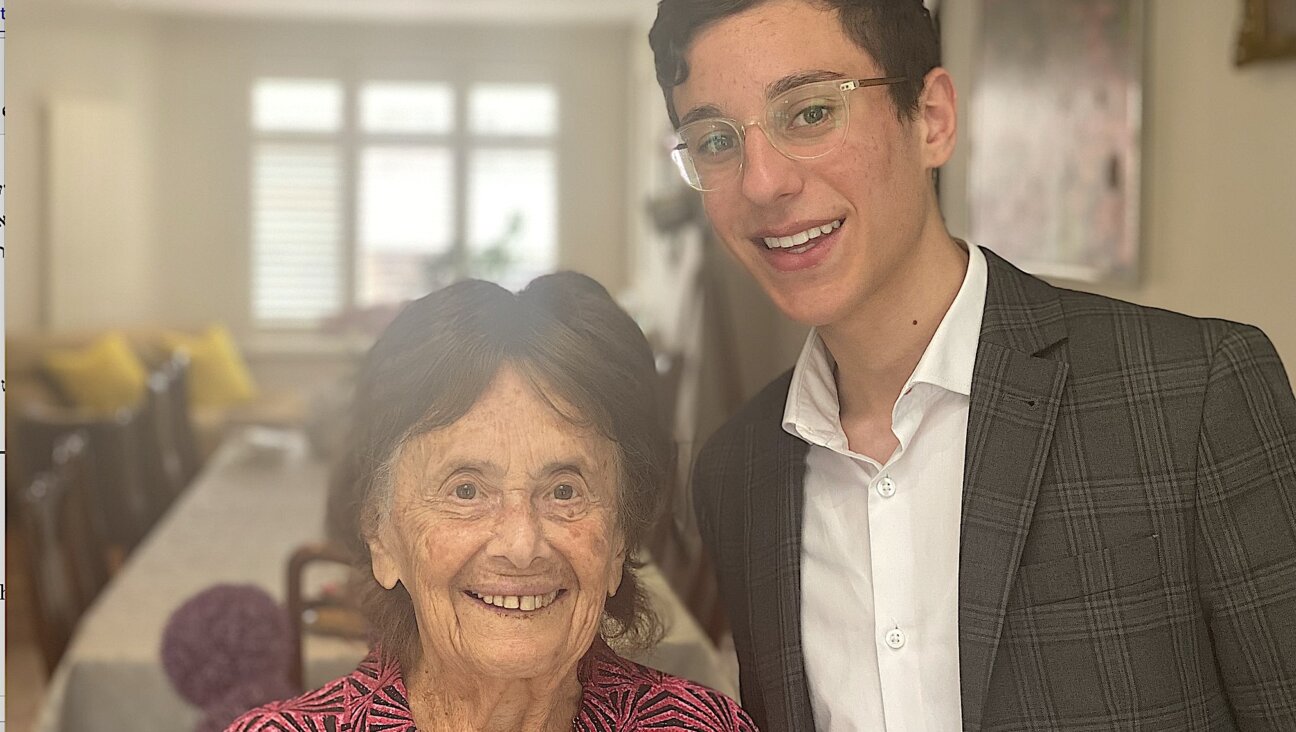He walked every block of the Bronx and found traces of a vanished Jewish world
William Helmreich died of COVID-19 before his book, ‘The Bronx Nobody Knows,’ was published. His wife is keeping his work alive

William Helmreich’s widow, Helaine, center, and son Joseph, right, with Toby Weiss, wife of Rabbi Avi Weiss, left, at the Hebrew Institute of Riverdale. Photo by Beth Harpaz
William Helmreich walked every block in the Bronx. And everywhere he went, he found traces of the Jews who made up half the borough’s population less than a century ago.

He found them in small shops, in building names, and in churches whose Stars of David reveal their origins as synagogues.
Helmreich documented all of this in his book, The Bronx Nobody Knows: An Urban Walking Guide. And while Jewish history makes up just a small part of this wide-ranging portrait of the Bronx and its secrets, Helmreich illuminates it in nearly every neighborhood he describes.
The Bronx Nobody Knows was published this month by Princeton University Press. But Helmreich didn’t live to see it. He died at age 74 on March 28, 2020, one of the first Americans killed by COVID-19 in the apocalyptic first wave of the pandemic.
‘I recovered. He didn’t’
“We both got COVID,” Helmreich’s widow, Helaine, said in an interview. “I kept thinking every day, he’s going to get better. But I recovered. And he didn’t.”
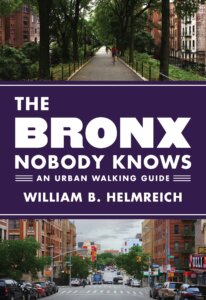
Helaine walked every step of the way with her husband, clocking 800 miles over nine months of exploring the Bronx together. She’d also walked many of the 10,000 miles he covered for his four previous guidebooks, The New York Nobody Knows, The Manhattan Nobody Knows, The Brooklyn Nobody Knows and The Queens Nobody Knows.
He finished researching and writing the Bronx book before the pandemic hit, and she was determined to see the book published. So she shepherded the manuscript to the finish line, reviewed all 433 pages and apologized in a note to readers for any missing acknowledgements: “Had he lived, he surely would have thanked many more people.”
A child of Holocaust survivors
William Helmreich was born in 1945 in Switzerland. His parents were Polish Jews who made it to the Swiss border after a harrowing trek through occupied Belgium and France, one step ahead of the Nazis.
The family eventually settled on 105th Street in Manhattan and later in Washington Heights — rough neighborhoods at the time. William “had a fight a day” on his way to Jewish day school, Helaine said. His father, Leo, a diminutive man who worked in the Diamond District, always carried a gun, which he drew — but never fired — in run-ins with muggers.
The ‘last stop’ game
Every Sunday, Leo played a game with William called “the last stop.” They’d get on the subway, go to the end of a line, and explore the neighborhood. Those walks inspired Helmreich, decades later, to write his walking guides to the boroughs.
He wrote a dozen other books, too. A sociologist and Jewish studies scholar, he’d earned degrees from Yeshiva University and Washington University, and he taught at the City University of New York. Several of his books looked at Jewish life, including The World of the Yeshiva and Against All Odds: Holocaust Survivors and the Successful Lives They Made in America.
The ghosts of synagogues past
Jews make up just 4% of the Bronx today. But Helmreich stumbled across many remnants of their vanished world.
In Mott Haven, he saw the name Congregation Netzach Yisrael B’nai Yaakov set in stone on an Assemblies of God church. In East Tremont, he noticed Stars of David decorating the First Glorious Church.

And at a preschool run by the Catholic Archdiocese, he saw the Ten Commandments, engraved in Hebrew. The preschool replaced the Mosholu Jewish Center, which had thousands of members and was led by Rabbi Herschel Schacter. Schacter, a U.S. Army chaplain in World War II, entered Buchenwald an hour after the camp was liberated and told the Jewish prisoners: “You are free!”
“Almost every old synagogue in the core neighborhoods of the Bronx where most Jews once lived is either gone, abandoned or in terrible shape, or has been taken over by a church and significantly altered,” Helmreich wrote.
But he found one shul in pristine condition inside a nursing home on East 167th Street. The home, founded by the Daughters of Jacob, had just one Jewish resident when Helmreich visited. The synagogue and its Torahs were proudly preserved by the building’s Italian American owner.
The “soft glow of twilight streaming in from the windows” and its carvings of biblical stories gave Helmreich “an eerie feeling of literally having gone back in time.”
Yiddish and egg creams
In Norwood, Helmreich visited the Sholem Aleichem Cultural Center, which still hosts a weekly group of “Yiddish enthusiasts,” even though the neighborhood is now predominantly Hispanic. In Highbridge, where candy stores once served egg creams, he found bodegas and barber shops. And on Belmont’s Arthur Avenue, known as the Bronx’s Little Italy, he spotted Teitel Brothers. The store sells Italian products but was founded in 1915 by Jewish immigrants.
Helmreich also visited Co-op City, whose residents are now more than 60% Black. Its 15,372 affordable apartments were once occupied mostly by Jewish, Italian and Irish New Yorkers, and the complex was the brainchild of Jewish engineer Abraham Kazan, who championed decent housing to spare working-class people the misery of tenement life.
White flight and gentrification
So what happened to the Jews who once lived in the Bronx?
It’s the same story of white flight that emptied out cities around the country after World War II. Upwardly mobile Jews and other white ethnic groups fled to suburban homes with backyards and better schools in response to urban decline and rising crime.
The Black and Hispanic New Yorkers who replaced them moved to the Bronx in search of a better life, just like the Jews had. But that better life didn’t always materialize, Helmreich explained, blaming decades of government neglect, disinvestment and social ills. The construction of the Cross-Bronx Expressway, completed in 1963, also “cut through communities and forced people to move,” Helmreich wrote.
What makes the Bronx different from the rest of the city now is its relative lack of gentrification. Brooklyn has luxury towers. The Lower East Side has expensive cafes and trendy bars. The Bronx, meanwhile, retains plenty of affordable housing, but it also has the city’s highest rates of poverty and crime, just one bookstore and no Trader Joe’s.
But the gentrifiers are coming, Helmreich predicted: “Inexpensive bodegas will be replaced by fancy emporiums and places where coffee is four dollars a cup instead of seventy five cents.” He foresaw less crime and better services but skyrocketing rents — and poor people displaced.
For now, though, he wrote, the Bronx remains “the grittiest and most authentic” part of New York.
Why they wore neutral colors
Lloyd Ultan, who was the official Bronx historian for more than 25 years, said Helmreich’s conversations with locals are the best part of the book because they shatter the borough’s “outdated negative image.”
For sure, Helmreich quoted many locals who love the Bronx and are proud of their neighborhoods. But he didn’t downplay the borough’s struggles — the parks that people dare not enter, the blocks where windows are covered with bars.
“What do you do with the book? Sell it?” a man in a bowling alley asked him. “They’ll kill you if they find out you was talking about them.”
At one point, a woman expressed surprise that he and Helaine had safely “walked through red, blue, red, blue” — references to territory controlled by competing gangs, the Bloods (red) and Crips (blue).
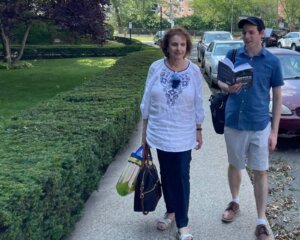
That’s why they always wore neutral colors, Helaine explained. And in all the miles they covered, they never had a frightening encounter.
“I could walk with Bill anywhere because he knew how to do it,” she said. “If someone even looked at us in a hostile way, he’d just smile and say, ‘Hey, how ya doin’?’”
He had “this gift,” she added, “of being able to talk to anybody and get them to open up and really respond to him, from the most depressed homeless person on a park bench to a nuclear physicist at a college. And he would always leave them with a joke and leave them laughing.”
“My mom always jokes that he could talk to a stone, and the stone would answer back,” their son Joe added.
A yeshiva in Riverdale
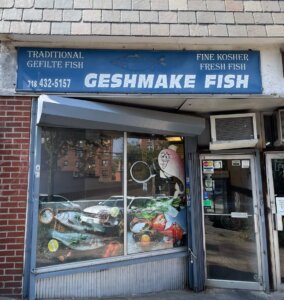
I met Helaine and Joe for lunch at the Moss Cafe in Riverdale. It’s the last Bronx neighborhood with a robust Jewish community. There’s a kosher bakery, S&S Cheesecake; lox and gefilte fish at Geshmake Fish; the Hebrew Home for the Aged, and the Hebrew Institute of Riverdale, a modern Orthodox synagogue and yeshiva.
Helmreich wrote about the Hebrew Institute and its founder, Avi Weiss, so we headed there after lunch. Weiss is known for his leadership in the movement to free Soviet Jews, and for his 1989 protest at a convent at Auschwitz. (He jumped a gate, dressed in a prisoner’s striped uniform, and the pope later closed the convent.)
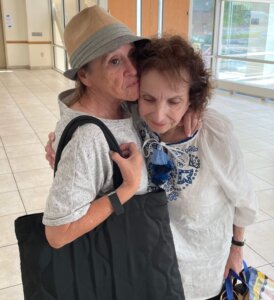
The woman who opened the Hebrew Institute’s door for us turned out to be Rabbi Weiss’ wife Toby. She and her husband are old friends of the Helmreichs, but hadn’t seen them in years.
“Your husband was the very first person we knew who died from COVID,” she said as she embraced Helaine. “When we heard it, we couldn’t believe it.”
Helaine’s role
William wrote in the Bronx book that Helaine was his “research associate” and “a keen observer of human life” who noticed many things he missed. He couldn’t draw, so she also sketched for him. She had her own career as well, as a speech pathologist, novelist and ghostwriter.
Now that the Bronx book is in print, she hopes to finish another of William’s projects: a guide to Staten Island. They’d walked miles of the borough together and the book was half-written when he died. She found an ethnographer to finish the research and hopes to eventually get it published.
Her devotion to his work and thorough knowledge of it made me wonder if perhaps her role was understated. A white man walking around in a place he didn’t belong, asking strangers nosy questions, could provoke suspicion. Surely having Helaine by his side was part of his charm.
“Are you the woman behind the great man?” I asked.
“He always said that,” she reluctantly acknowledged with a smile. “But I always felt he was the great man, with me or without me.”



